A Fantasist First and Foremost, Maxfield Parrish’s Retrospective at a Palm Beach Mansion Is Aptly Timed for America’s New Golden Age
The painter thrived due to his aspirational classicism, a hazily reconstructed, quasi-historical Hellenism strained through the sensibility of Cecil B. DeMille.

‘The Ethereal Worlds of Maxfield Parrish’
Henry Morrison Flagler Museum, 1 Whitehall Way, Palm Beach, Florida
January 21, 2025 until April 20, 2025
Maxfield Parrish, once the most popular artist in America, is now a name associated unfailingly with kitsch. Yet Parrish’s own estimation of himself was as a “popular” artist, and said as much in an interview towards the end of his life. He straddled numerous genres but stayed strongly rooted in illustration.
His drawings for “Mother Goose” and “The Wizard of Oz” are rightfully beloved classics. Parrish carved out his own idiosyncratic niche in American art history. As anyone who has been charmed by his imposing mural at the King Cole bar at Midtown Manhattan’s Saint Regis Hotel, Parrish endures.
A retrospective opens tomorrow at Palm Beach’s Flagler Museum — once the Gilded Age estate of Florida Industrialist Henry Flagler — now a heritage site and museum. It’s an oddly appropriate venue for Parrish, who was one of the most spectacularly successful illustrators and painters of his day.
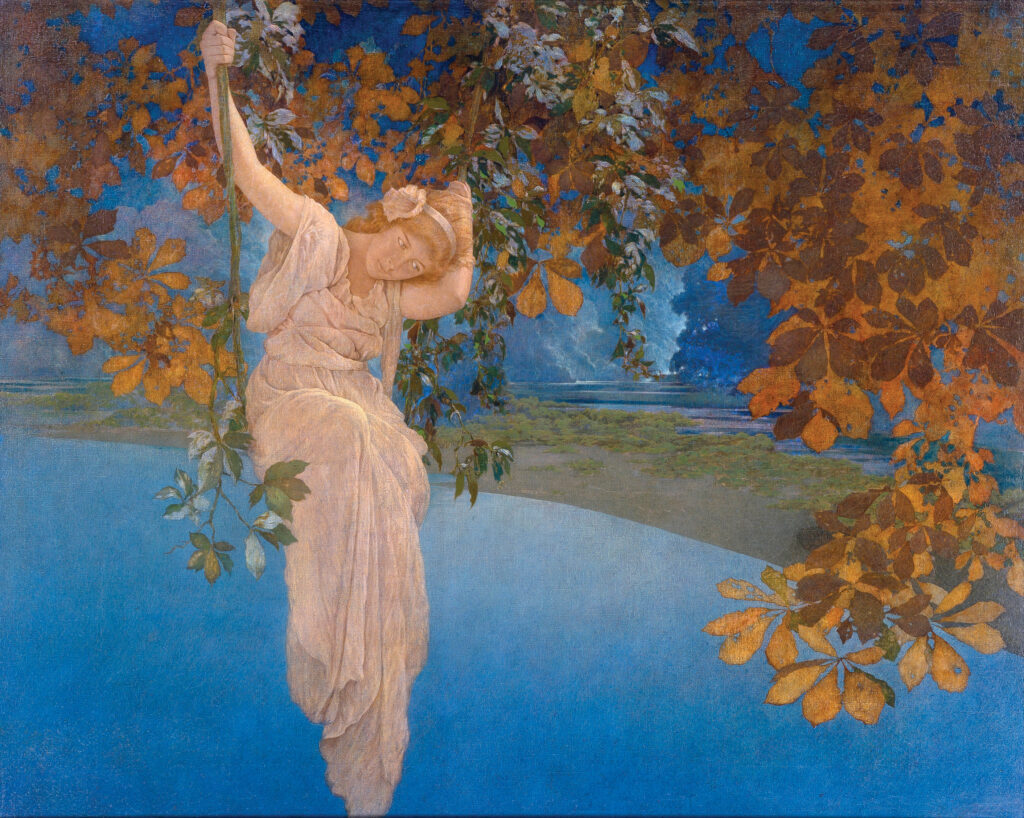
Vanderbilt and Hearst both collected him, and his paintings graced the toniest venues across the world. His painting for the King Cole bar at the Saint Regis was installed in 1906. It still graces the bar front and center, after a costly restoration in 2013.
Parrish was surprisingly unpretentious and full of good humor about his work. Nor was he above putting subtle jokes into his most famous paintings. The sour face of King Cole at the Regis is allegedly a likeness of John Jacob Astor, who unsuccessfully tried to lure Parrish into painting a similar mural for his own Knickerbocker hotel.
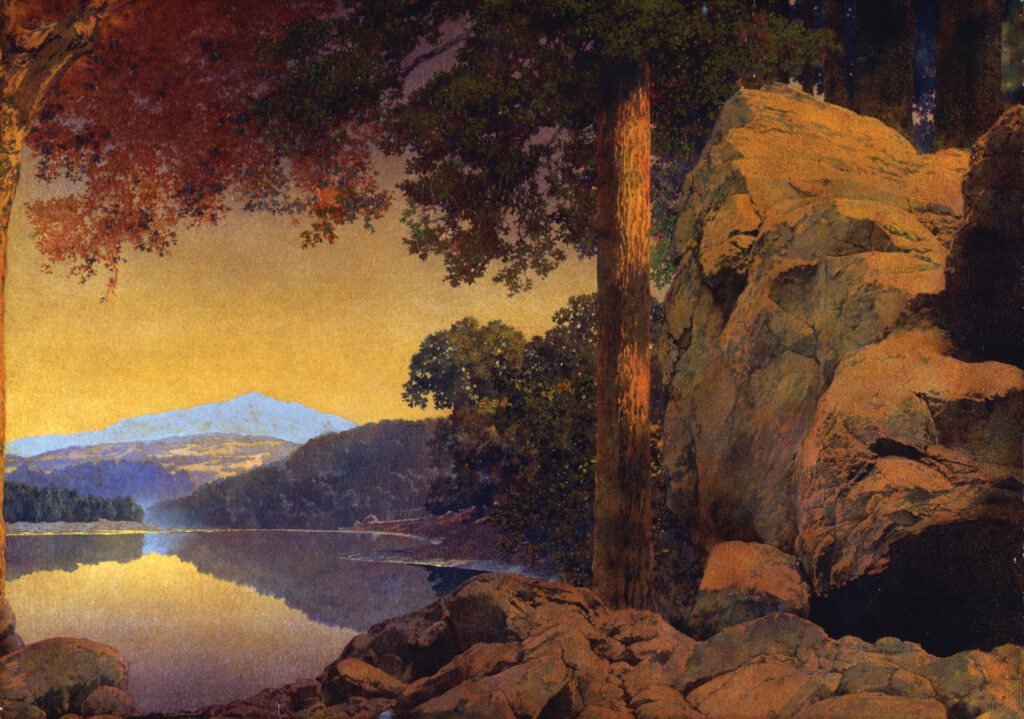
Despite his commissioned works of fine art, he was perfectly happy to use his talents for magazines and children’s book. This is strongly reflected in the works selected for the Flagler show, which feature both his commercial illustrations and the works one would consider fine painting.
There is a sampling of his magnificent talent for Storybook pictures, like his drawing of Little Jack Horner from “Mother Goose.” There is also his paean to American farmers, “Dawn Milking Time,” showing a young dairy farmer standing on a hillock in a mist filled dawn that could be a classic cover of the Saturday Evening Post. There is his wonderfully comical drawing of Jack and the Giant, reminding us that humor was an important and constant element in his work, even his most serious paintings.
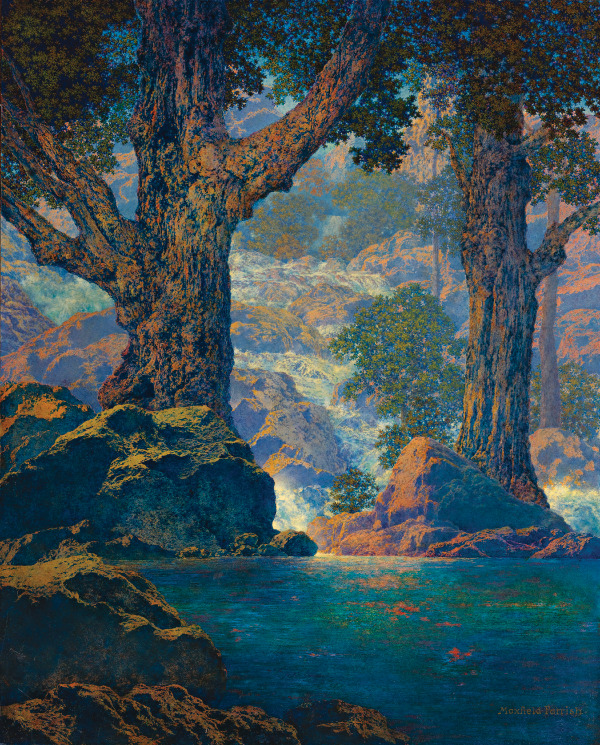
There are also several straightforward landscapes, like “June Skies,” which is nonetheless suffused with his signature color. His study for a theatre backdrop, “Plainfield Town Hall Stage Set,” shows that at his most restrained he was on par with the other serious landscape painters of his era.
Parrish was a fantasist first and foremost, however. Even in landscapes you can sense when he pushes into full-blown flights into arcadian dreaminess. “Cascades” features waterfalls tumbling into a glade, but rendered in such a dappled and ornamental way — the knottiness of the mighty oak trees are wonderfully overblown — that it is a scene worthy of Tolkien.
Then there are examples of his most popular, quasi mythological works, recalling his most popular works “Daybreak” or “Ecstasy.” “Reveries” features an Art Nouveau nymph, head tilted pensively on a swing, suspended from an impossibly picturesque golden tree, all set against a cerulean lake and sky. She seems suspended from an exaggerated height, however, a conceit to perspective that is nearly surreal.
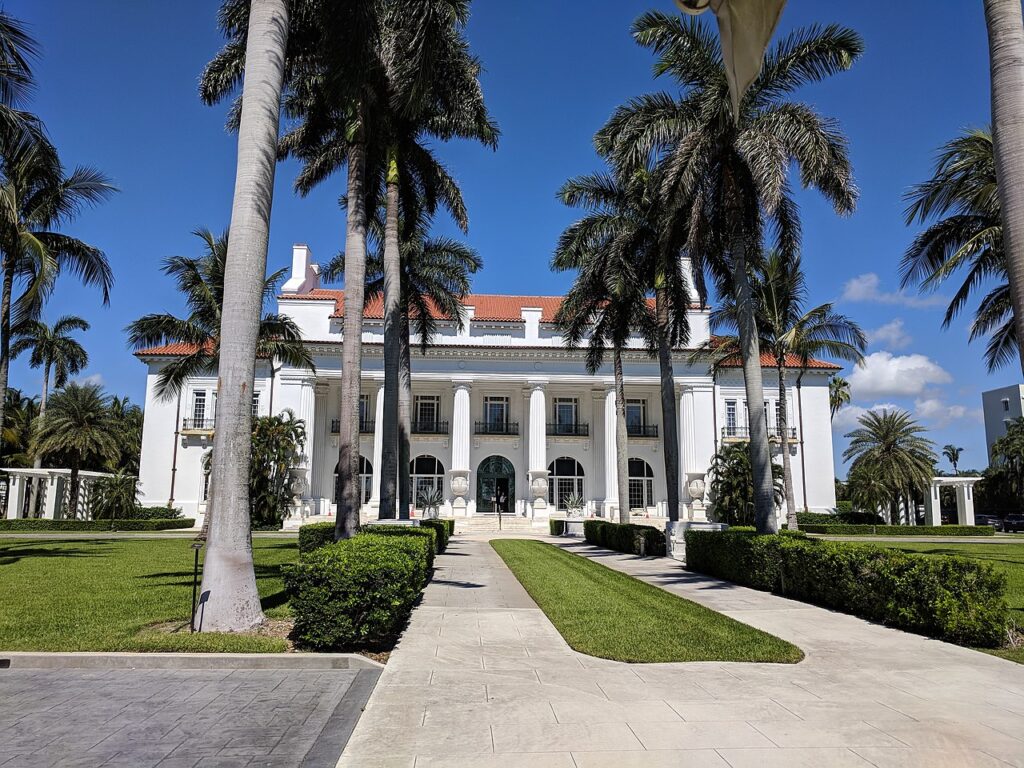
Yet reality isn’t the aim here. Parrish thrived due to his ability to create aspirational classicism, a hazily reconstructed, quasi historical Hellenism strained through the sensibility of Cecil B. DeMille. Parrish enchanted America by harnessing its talent for endless aesthetic reinvention, one that grasped at essences and wasn’t too concerned with the rigors of historical accuracy. He reimagined America as a self-invented, other worldly arcadia, and Americans loved it.
There is also no questioning the absolute splendor of Parrish’s technique. Nothing pops like a Parrish, his colors so luminous and jewel-toned that the eye literally boggles when setting upon them. Not since Lapis Lazuli was ground for the ultramarine robes of Medieval Madonnas have such blues been created (the famous “Parrish Blue”).
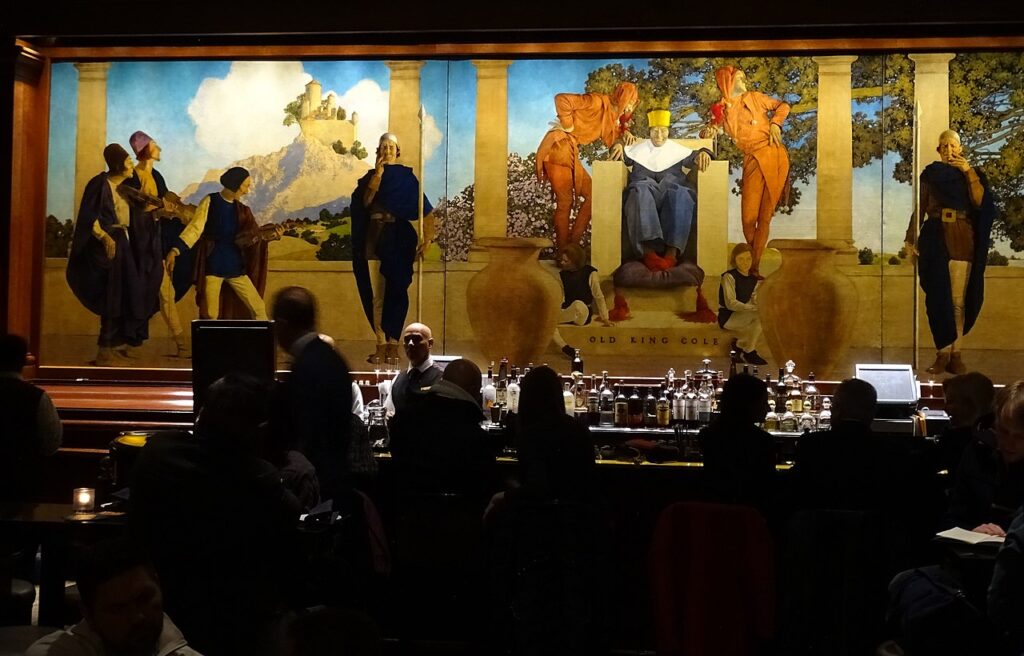
This unreally vibrant palette was the result of a painstaking layering process of only four colors known as CMYK: Cyan, Magenta, Yellow, and Key (black). Together with layers of glaze, applied like the surface of a lacquered box, Parrish created his almost photorealistic levels of luminous detail.
This technique is central to the appeal he achieves when applied to his most fantastical scenes. He creates scenes so unabashedly pretty the mind is inclined to disbelieve them, and the incredibly meticulous detail and color manages to sell their unreality as nearly real. It was this ingenious combination of the extremely technical with the whimsical that makes the Parrish style.
With his peculiarly American and generous combination of both low and high, his skillful borrowing of influences from every quarter, Parrish became one of the beloved artists in American history. At his height, his art graced the walls one in every four households in America. This exhibit at the Flagler shows us why.

